People are sick of being sick, the New York Times tells us. “Which virus is it?” the title of the article updating the winter 2022-23 sick-season asked.
Entering 2023, U.S. health citizens face physical, financial, and mental health challenges of a syndemic, inflation, and stress – all of which will shape peoples’ demand side for health care and digital technology, and a supply side of providers challenged by tech-enabled organizations with design and data chops.
Start with pandemic ennui
The universal state of well-being among us mere humans is pandemic ennui: call it languishing (as opposed to flourishing), burnout, or indifference. Our unifying human field theory starting off 2023 is being sick of being sick.

Thus, the sage advice as we approach gatherings for Christmastime 2022: “Close your mouth and step away from the human,” by Katherine Wu of The Atlantic.
We’re actually dealing with a septo-demic, in the opinion of Dr. Peter Hotez who recently explained the concept in this AMA podcast. “Septo“ refers to “seven:” along with the triple-demic of COVID-19, influenza and RSV, add in four more viruses: parainfluenza (a cause of croup), rhinovirus, metapneumovirus, as well as pneumococcus which is still alive and replicating.
Furthermore, in early December 2022, CDC Director Dr. Rochelle Walensky warned of the additional strains these multiple viruses could exact on an already-stressed U.S. healthcare system. Dr. Wallensky and other public health officials acknowledged “vaccine fatigue” and the relatively low uptake of vaccinations for fending off the coronavirus and the flu as well as other infectious diseases.
People may be sick of being sick nationally and globally. But most people are even more plagued by inflation and their home economic downturns.
Financial health beats physical health priorities entering 2023
Personal financial concerns have displaced worries about the pandemic as the top-stressor among U.S. consumers. We enter 2023 with home economics setting our tables as a context for our overall health and well-being.
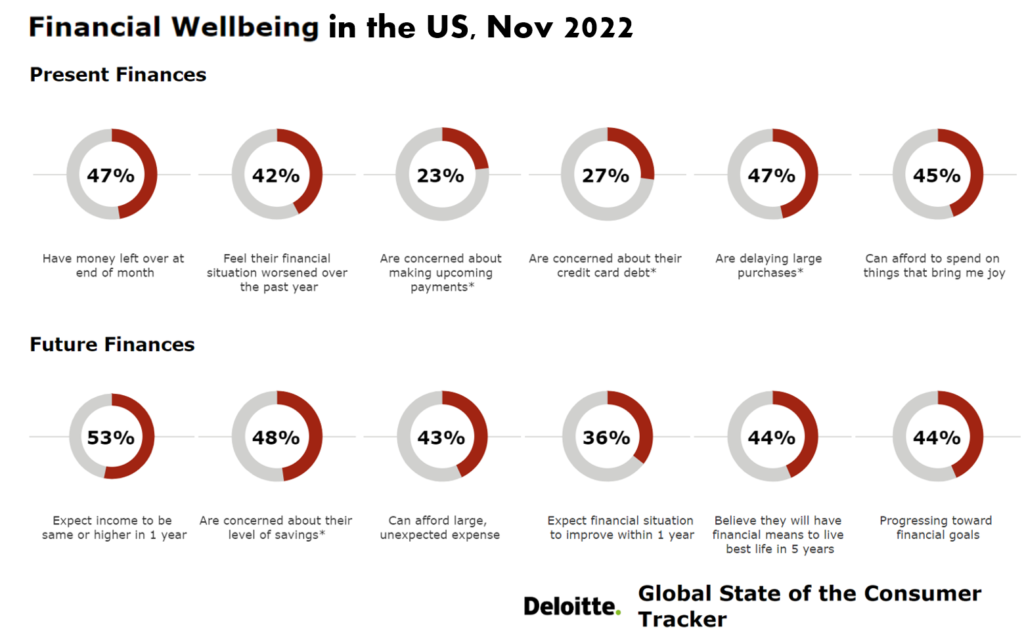
Deloitte’s latest Global State of the Consumer Tracker gauged U.S. consumers’ financial wellbeing in November 2022. Looking at the “Future Finances” lower half of the chart from Deloitte’s tracker, we see that 1 in 2 people expect their income to be at least at high a year from now, and 43% being able to afford a large, unexpected expense.
That leaves 50% of people in 2023 who anticipate falling incomes as well as concerns about their ability to save and pay for an emergency expense.
Financial health will continue to blur into physical and emotional well-being in 2023. More families face difficulty paying all of their, the Consumer Financial Protection Bureau wrote in their December 2022 look into Making Ends Meet in 2022. The CFPB will also continue to monitor medical debt, and for good reason: this Kaiser Health News research program has been highlighting providers’ lawsuits suing patients for unpaid bills, such as this column asking, “Will your hospital sue you?”
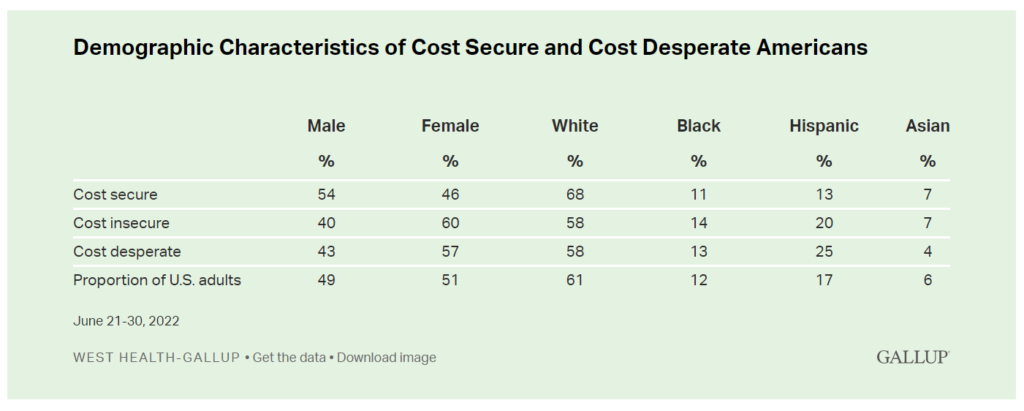
Stress is part of an American patient’s struggle to pay for health care, Gallup and West Health learned in their recent poll on healthcare affordability.
In 2023, consumers will continue to see prescription drugs as an unaffordable line item in household healthcare spending. One in three consumers pointed to prescription drugs as the highest spending category in U.S. health care, with hospital costs following in second place, seen in the December 2022 KFF Health Tracking Poll.
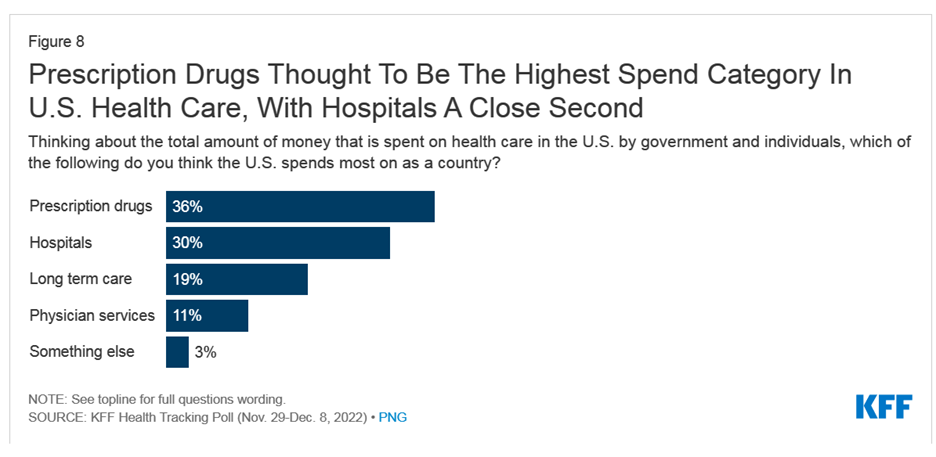
Patients-as-health-consumers will look to the Inflation Reduction Act’s provisions to begin to lower drug costs, as well as to coupon and digital tech on-ramps to drug discounts from the likes of GoodRx and Mark Cuban’s growing organization tackling the cost of medicines, CostPlus Drugs.
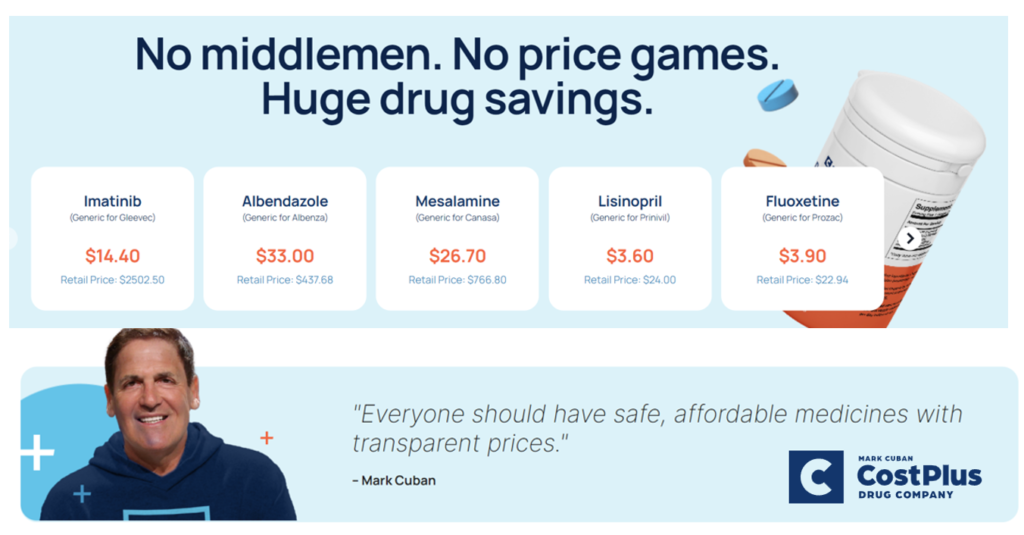
2023’s journey toward value in health care
The purchaser of health care is seeking greater value for money in health care spending. That purchaser takes the form of both the employer-sponsor of health care insurance for workers, and the patient-as-payer herself.
Brian Klepper of Worksite Health Advisors, longtime consigliere to self-insured employers, unions, and value-oriented providers of medical services, explained the growth in value-based care he expects to see in the coming months:
“Today’s descendants of the disruptor Managed Care companies of the 1980’s are value-focused and high performing….that consistently deliver (or buy) demonstrably better health outcomes and/or lower cost than conventional approaches…They typically are so confident in their capabilities that they’re willing to put their fees at risk against the performance targets they claim they can achieve. Value is slowly gaining market traction, and that traction is accelerating.”
The Business Group on Health’s survey into large employers’ plans for health benefit designs in 2023 has a strong focus on value, concurring with employee benefit consulting studies from Mercer, SHRM, and WTW, among others.
For consumers-as-health care payers, value is in the eye of the beholder – where value-based care should comport with valuing what matters to patients, as this classic, evergreen JAMA essay proposed.
Baking Health Equity into Value-Based Care
We can expect value-based contracting in 2023 to embed health equity incentives, such as this contract struck between Independence Blue Cross and Jefferson Health to address health for residents of Philadelphia including the Accelerate Health Equity initiative.
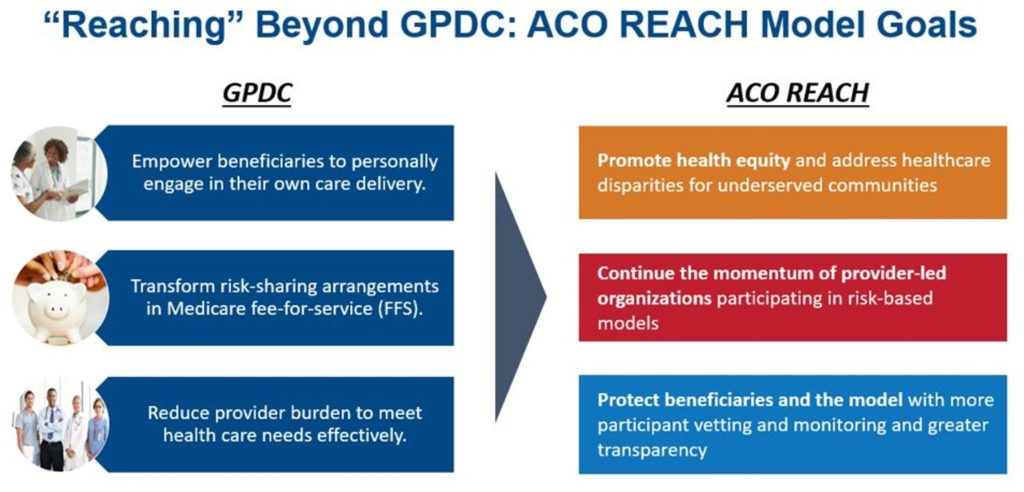
The updated ACO Reach payment model from the Centers for Medicare and Medicaid Services (CMS) sets forth a value-based model of capitated payments to physicians who meet quality and spending targets – combined with a plan to deal with health equity. This program will be implemented starting on January 1, 2023. Key to the plan’s success (crossing fingers) is that the participants must submit an equity plan that requires collecting data as well as developing measures to track success in meeting the goals for addressing social determinants of health.
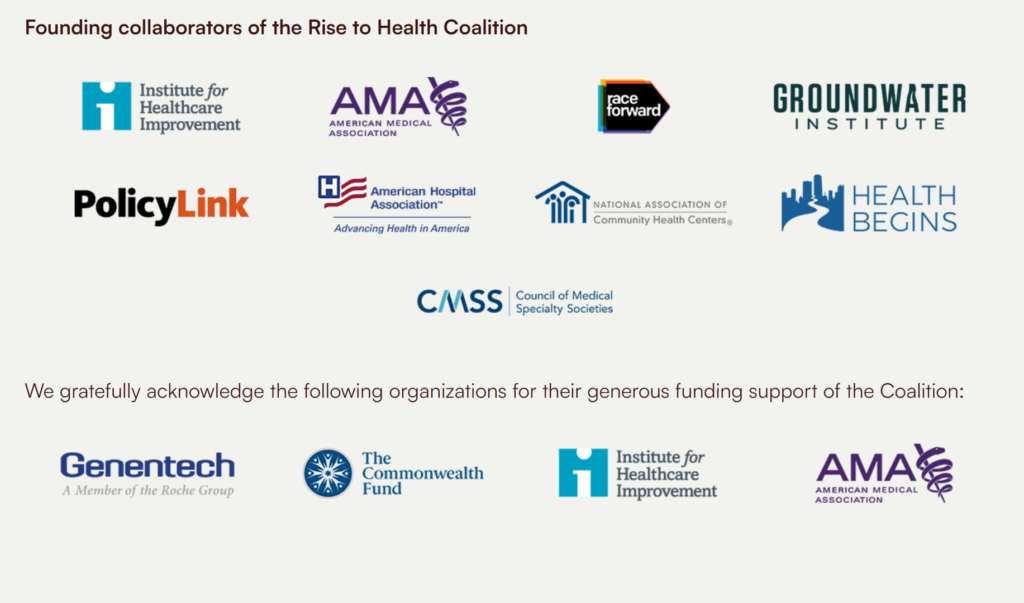
Getting to health equity is a team sport and requires collaboration. Look to examples like The Rise to Health Equity Coalition bringing together industry stakeholder organizations to build capacity, influence policy and payment, and transform mindsets and narratives around racial justice – including the AHA, the AMA, Genentech, and other organizations under this important umbrella.
Looking for love, empathy and lower costs for health care
Costs, too, can delay patients’ seeking care, which Qualtrics learned in their recent survey of health consumers.
But value in the eye of patients-as-payers goes beyond sheer costs to experience across the patient journey.

BDO found that 3 in 5 U.S. consumers delayed seeking routine medical care in the past year. The risk of care postponed can exacerbate chronic conditions or delay diagnoses, leading to complications and costs that might have been averted.
Most patients have experienced frustrations – in the designer’s parlance, “friction” – when seeking routine care as well as during a routine medical appointment.
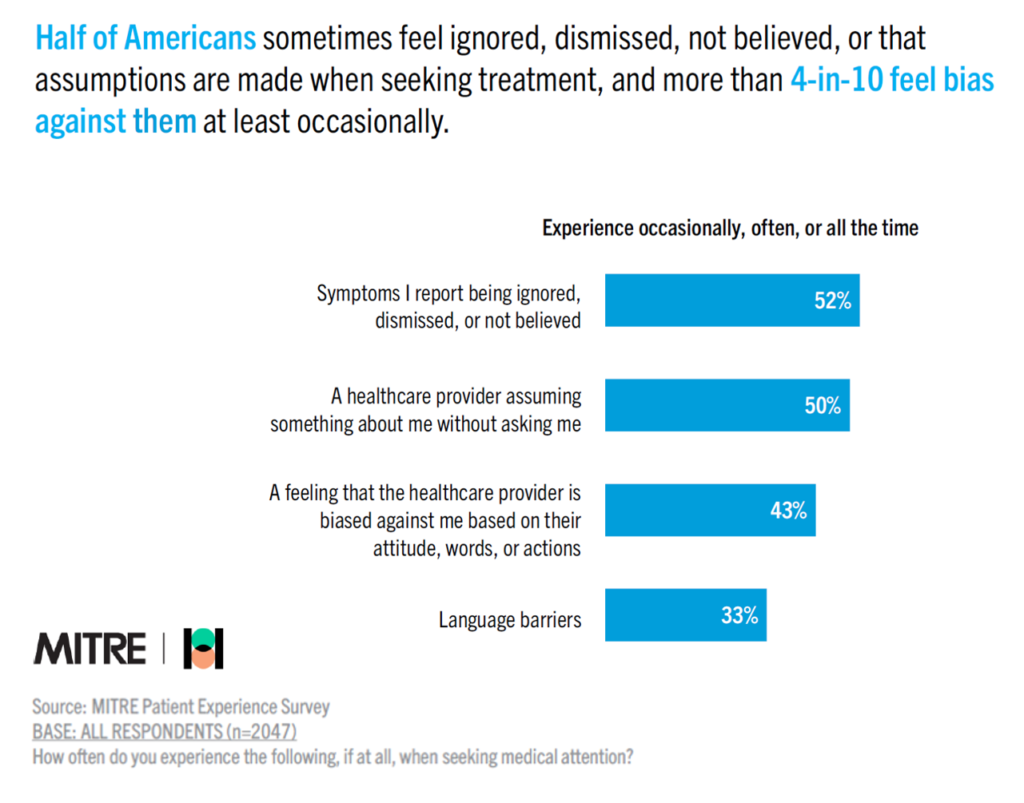
Clearly, patients’ experiences as consumers of healthcare lack the service levels they expect as payors based on this MITRE-Harris Poll. Fully one-half of consumers felt the symptoms they shared with providers were being ignored, dismissed or not believed. Underneath that datapoint, more patients dealing with chronic conditions felt dissed by their providers, along with caregivers, people identifying as LGBTQ+, and folks of Hispanic ethnicity, MITRE observed.

Tiffany Mura, SVP, Health Practice Lead at design firm Mad*Pow, shared 2023 Health Trends through her health experience design lens. She points to consumers’ growing demand for brands to support their health – including brands outside of the healthcare space. As an example of this, check out Barclays Bank whose customers have access to mental health services through the banking app and website.
Mainstream consumers will view mental health as health in 2023
One gift of the pandemic was a mass recognition of and empathy for mental health – in oneself and in the larger community. More health citizens access therapy via virtual platforms at the start of the COVID-19 era in early 2020, with tele-mental health sustaining use ahead of other conditions for which people seek virtual medical services.
Most Americans believe that health insurance should cover mental health services akin to physical health care, and that the cost of mental health care is a big problem for the nation along with lack of supply of therapists and continued stigma.
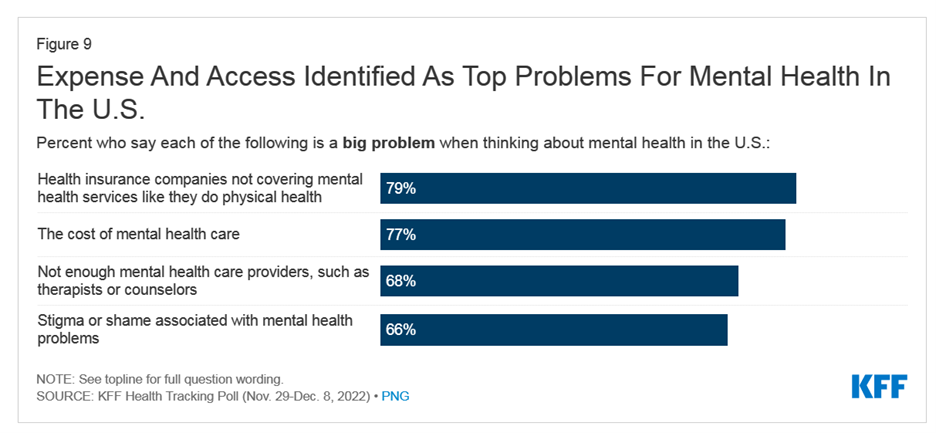
Thus, increasing funding for access to mental health services and strengthening requirements to compel health plans to cover mental health garnered majority support in the KFF December 2022 survey – especially among women.
Food-as-medicine and your healthy kitchen in 2023
One industry that continues to delight consumers is food, which played an especially impactful role during the pandemic era through grocery stores as essential touchpoints for both food/nutrition and health at the pharmacy and OTC aisles.
Wellness-oriented people are part of a movement of “conscious consumers,” becoming more aware of the provenance and sourcing of what they eat and how it is produced, KeHE 2023 Macro Trends forecasted. More health-valuing consumers are eating “flexitarian” food choices, consuming less sugar and more plant-based options (and family table trends like “Meatless Monday’s”). Part of this movement is also a group of people consuming less alcohol, with more protein-infused beers and “mocktails” or non-alcoholic drinks a mindful choice in social situations.

Nestle has a view into “your kitchen in 2023,” identifying a key trend for 2023 they term “wellness, redefined.” Two-thirds of people in the U.S. say their health is more important today than two years ago, combining the health of the planet as an extension of personal well-being. Nestle’ Gerber brand for babies is expanding plant-based foods called Plant-tastic with an eye to boosting well-being for toddlers from the start.
Expect your grocery store to continue expanding as one of your favorite health destinations. Kroger will expand its food-as-medicine platform, deploying tele-nutrition with registered dietitians and growing evidence-base for prescribing a Mediterranean (or DASH) diet for heart-health, among other eating styles.
Growing adoption of “broad-spectrum” self-care – including digital health tools
“When it comes to dietary supplements, over-the-counter medicines (OTCs), and medical devices, consumers broadly think of these products as items used to support their overall health and wellness,” a team from CHPA (the Consumer Healthcare Products Association) explained in Nutra-Ingredients USA.
COVID-19 and working from/learning from/exercising from/praying from/cooking from home accelerated, our homes have been morphing into our personal “HealthQuarters,” I recently discussed here in Health Populi. As we observed in the wake of the Great Recession of 2008, more DIY care came to people’s self-care at home. This only accelerated during the coronavirus pandemic, and this time around, bolstered by digital health tools and access to broadband unavailable 14 years ago.
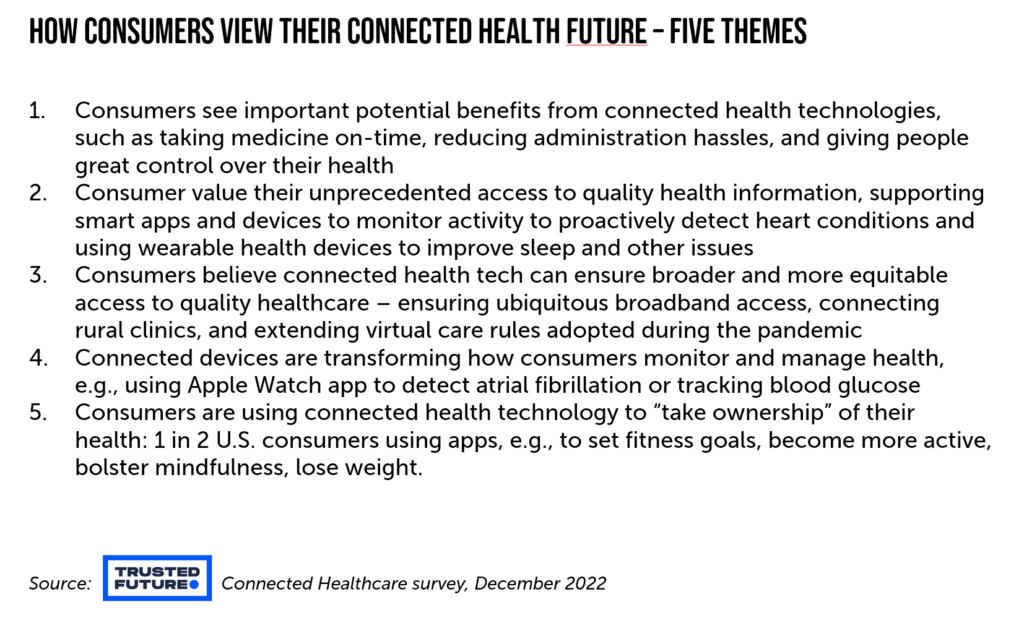
Consumers are excited about connected health care, the Trusted Future study bullishly reports. People see the potential benefits from digital tools that help them take their meds on-time, make appointments on-line, track heart health, and even participate in clinical trials more accessibly and efficiently.
Digital citizenship: whither health and personal data privacy in 2023?
On the upside, sharing personal data can bolster personalized healthcare. That’s the upside and it’s promising and exciting.
However, consumer-facing digital health tools generate personal data that many people want to protect from third parties’ eyes outside of their health-and-fitness lives.

One example of private household data gone astray is the story of a Roomba-owning woman whose screenshots of her on the toilet ended up on Facebook. Reported in MIT Technology Review on December 19, 2022.
“In one particularly revealing shot, a young woman in a lavender T-shirt sits on the toilet, her shorts pulled down to mid-thigh,” the article asserted.
“This set of images represents something bigger than any one individual company’s actions. They speak to the widespread, and growing, practice of sharing potentially sensitive data to train algorithms, as well as the surprising, globe-spanning journey that a single image can take….The images reveal a whole data supply chain—and new points where personal information could leak out—that few consumers are even aware of,” the article detailed.
In the post-Roe v Wade/Dobbs decision world for women’s health, personal privacy has emerged a big issue going into 2023. A New York Times column was written in the summer of 2022 noting that, “In a post-Roe world, personal privacy is even more in doubt.”
In fact, POLITICO is already helping inform us for our forecast for 2024, anticipating that Roe will help define the 2024 Presidential race.
The opportunity and concerned embrace of technology-enabled health care and a consolidating industry
I’ve talked about peoples’ “concerned embrace” of technology, trading off convenience while trying to risk-manage privacy worries. In healthcare, patients and health consumers are looking for more convenient, accessible, less-costly health care services in light of their growing health economic awareness.
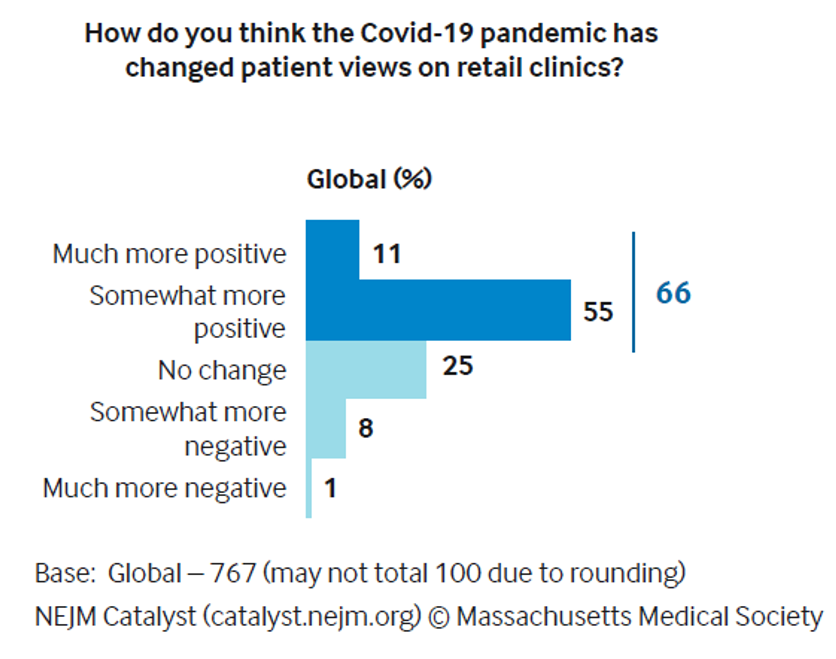
As health consumers, U.S. patients are increasingly accepting retail health sites for accessing and receiving care, found in this New England Journal of Medicine study.
Primary care is moving to pharmacy and retail clinic settings, which most consumers under 60 envision using and at least 2 in 5 Boomers and olders expect, as well.
Retail health care has improved access for vulnerable populations, as well – for uninsured people, under-insured folks with health insurance, immigrants, among them. Watch for the likes of Dollar General, Walmart, and other value-oriented retail storefronts to develop services expressly focused on medically under-served consumers.
Through 2023, we’ll see more technology-enabled care delivery to the home, in community-based brick-and-mortar retailers and clinical spaces, and virtually via telehealth for body, mind, and spiritual health and well-being.
In health care, scale matters, and particularly when economic forces are challenging, consolidation happens.
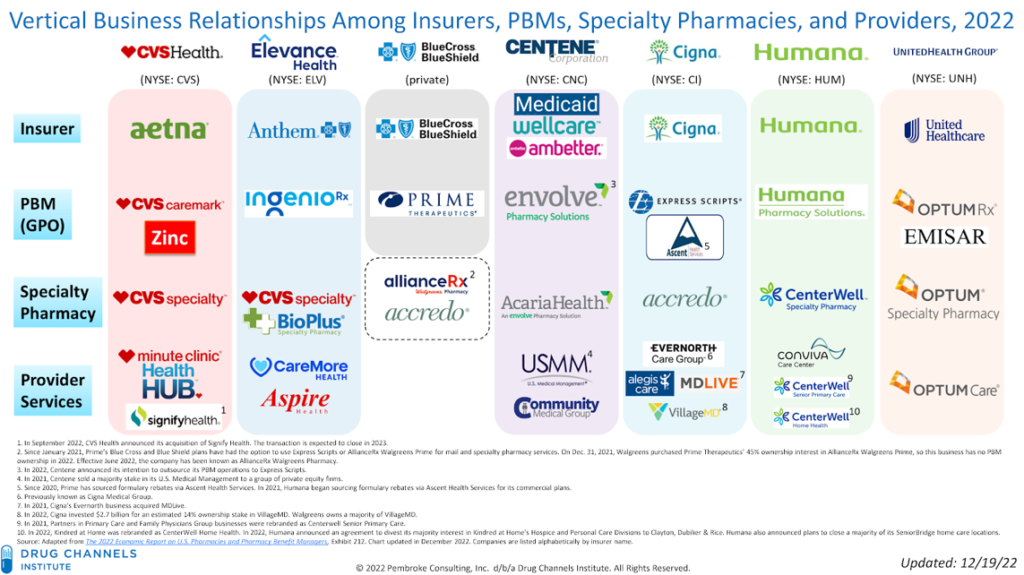
This diagram from my colleague and Drug Channels guru Adam Fein summarizes his view on vertical consolidation among health plans, pharmacy benefit managers, specialty pharmacy and health care providers. This is the current picture of some of the biggest health/care players as we enter 2023.
Not only does scale matter in healthcare, but technology matters, too. In the best of all possible worlds, our personal data can be used for good: to personalize treatments, to get services where they need to go when and where people need them, to determine quality and what works best, and to manage costs.
In 2023, patients-as-health citizens remain concerned about the privacy and security of their personal information across many fronts: in women’s health data in the post-Roe v Wade era, for medical bill redlining, or for advertisers who fall well out of “healthcare” contexts and HIPAA oversight.
A November 2022 hearing on the proposed merger between Kroger and Albertson’s – two grocery chains – went beyond debates on pricing and food chain industry consolidation to matters of consumer data privacy. “Consumers are increasingly concerned by the data collection that goes on, not just by these companies, but also the Googles and Facebooks,” Sumit Sharma of Consumer Reports cautioned.

As the Trusted Future study learned, “ consumers need to be able to trust that their technologies will be effective at protecting their most sensitive health data.”
In and beyond 2023, a trusted future is a healthy future.


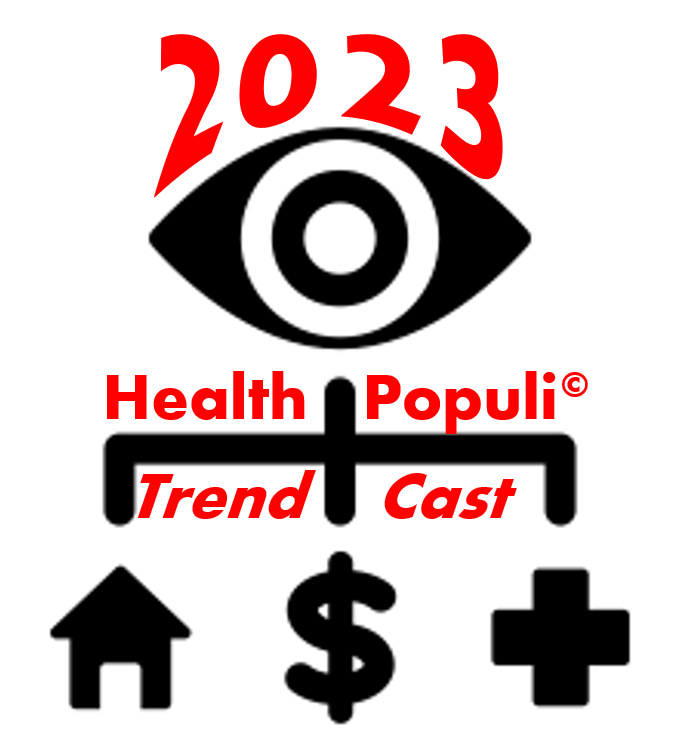


 Thanks to Feedspot for naming this blog, Health Populi, as a
Thanks to Feedspot for naming this blog, Health Populi, as a